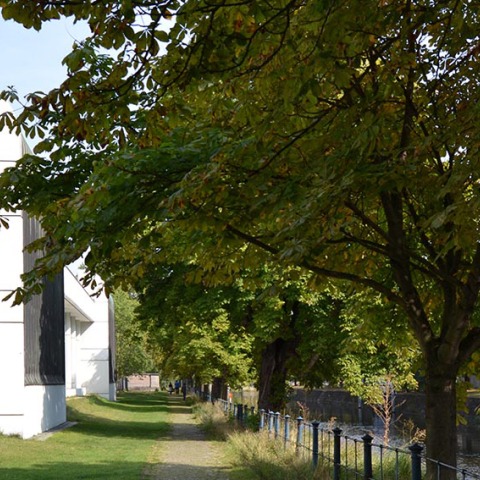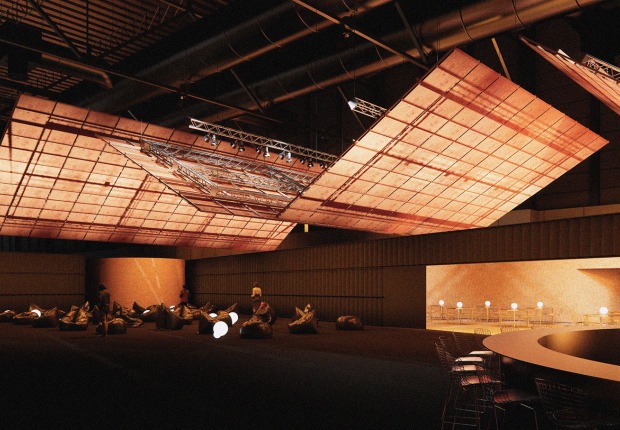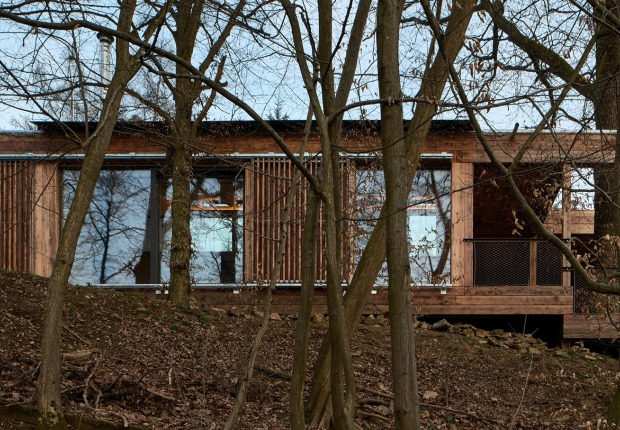In 1919, Walter Gropius founded in Weimar the “Das Staatliches Bauhaus”: The Bauhaus, which war an art school at his beginning. At that time it was something entirely new, so the Bauhaus represented a fusion between the art and the craftsmanship. The Bauhaus, considered today the house of the vanguards and the modern movement in all the fields, was opened between 1919 and 1933. It was organized by three celebrated headmasters: Walter Gropius 1919-1927, Hannes Meyer 1927-1930 and at least, Ludwig Mies van der Rohe 1930-1933, who also built in Berlin his last work in 1969: Die Neue Nationalgalerie. (click to see: The last Mies’ legacy; Neue Nationalgalerie)
The Bauhaus Archives is now the institution dedicated to the scientific study of this great school. The project reasserts the historiographic condition of this experience, which began with Gropius and at the present is a plan destined to the study and the discussion of the historical tradition of the modern.
Since 1960, the founder headmaster of the Bauhaus Archives, Hans Maria Wingler, aimed to create a building in order to house the institute and the majority of the historical documentation of the Bauhaus. Consulted an octogenarian Gropius thereon, he declared himself ready to design the building. The plan of the proposal was developed by Wils Ebert, Alexander Cvijanovic, Louis McMillen and Walter Gropius jointly, between 1964 and 1968. The plot designated for the construction, at the beginning, was located in Mathildenhöhe, in Darmstadt and was carried out as a stepped structure that spread out in two parallel wings in different levels. The project was dominated by skylights faced to the north, which had a distinctive roof in the ceilings of the canopy, as well as an access ramp to the flat roof.
Gropius did not live enough to see the construction of the archive, as he died the 5th of July of 1969, receiving the highest honours and distinctions by his work.
In 1970, the project was translated to West Berlin due to financial difficulties. In this city, a Gropius’s ex-employee, Alex Cvijanovic together with the Belin architect Hans Bandel, made the reprogramming of the proposal and built it between 1976 and 1979, using the basic organization of the model of Darmstadt.
The new building site that the city council of Berlin offered to locate the archive, in Tiergarten district, near to the Landwehrkanal, had a difference with the one in Darmstadt: the surface was flat. This nature forced to revise the general concept and provoked fundamental modifications, as a 180° rotation and a change in the facing of the roofs. Also, in contrast to what was planned in the mockup, the façade was erected based on prefabricated elements, which joints define the general image of the roofs in the building of Berlin.
It is possible, that Cvijanovic, as a mark of respect for Gropius, maintained the formal determining elements in the original scale model: the distinction of the constructive bodies, the reason behind the ramp and the serrated roofs. The ramp allows gaining access to the first floor, but more that open the building, cuts it visually; showing the global perception, a tendency to the formality. In the other hand, the structural distinction in two of the whole alluded to the separation of the functional areas: the zone of the permanent exhibition and the halls of the temporal exhibitions, separated from the archive and the administration.
Since the fall of the Berlin wall, the 9th of November of 1989, and the opening of the borders, the Bauhaus Archives began to have a bigger attendance of public.
In 1997 the building was declared National Monument.
The building has only 700 square metres of exhibition space available for the public, that is why it is planned, for the commemoration of the Bauhaus’s centenary, the construction of a new museum that will be finish in 2019.
In this occasion we present one of the last proposal of the life of Walter Gropius: The Bauhaus Archives. Even though, the main development of the building was planned by Gropiuos, 40 years after his masterpiece, the Bauhaus; the plan will be erected and ended by other architects some years after his death, becoming his last legacy to the Architecture.
More information
Published on:
October 22, 2016
Cite:
"The last Gropius’ legacy; the Bauhaus Archive" METALOCUS.
Accessed
<https://www.metalocus.es/en/news/last-gropius-legacy-bauhaus-archive>
ISSN 1139-6415
Loading content ...
Loading content ...
Loading content ...
Loading content ...
Loading content ...
Loading content ...
Loading content ...
Loading content ...
Loading content ...
Loading content ...
Loading content ...
Loading content ...
Loading content ...
Loading content ...
Loading content ...
Loading content ...
Loading content ...
Loading content ...
Loading content ...
Loading content ...
Loading content ...
Loading content ...
Loading content ...
Loading content ...
Loading content ...
Loading content ...
Loading content ...
Loading content ...
Loading content ...
Loading content ...
Loading content ...
Loading content ...
Loading content ...
Loading content ...
Loading content ...
Loading content ...
Loading content ...
Loading content ...
Loading content ...
Loading content ...
Loading content ...
Loading content ...
Loading content ...
Loading content ...
Loading content ...
Loading content ...
Loading content ...
Loading content ...
Loading content ...
Loading content ...
Loading content ...
Loading content ...
Loading content ...
Loading content ...





















































